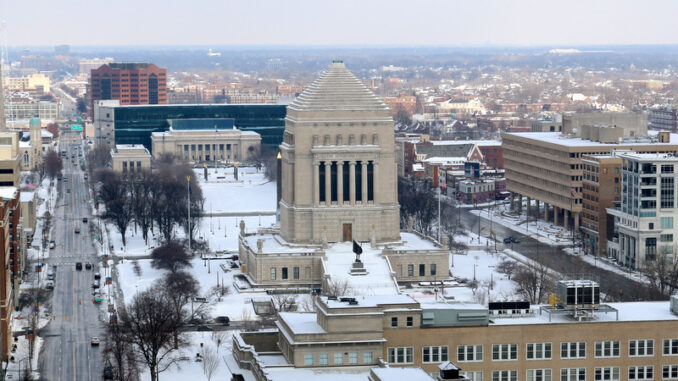
INDIANAPOLIS — Indianapolis in 1820 was selected to serve as the capital of Indiana. The hope was the White River, upon which the city sits, would serve as a great transportation route.
The planners apparently neglected to take into account the harsh winters and the fact the White River regularly freeze over.
Luckily for modern-day travelers, visiting Indianapolis is easy and well worth the trip. For starters, here are five must-see landmarks in the Hoosier State capital city:
Indianapolis Motor Speedway Hall of Fame Museum
Since its first running in 1911, the Indianapolis 500 — known as “The Greatest Spectacle in Racing” — has developed into an institution and a national treasure. The Indianapolis Motor Speedway Hall of Fame Museum, located in the middle of the famous speedway, is dedicated to preserving artifacts related to the races and telling the race’s history.
The museum opened in 1956 in a building located outside of the track. Large enough only for a few displays, twenty years later, the museum moved into a new building constructed in the middle of the track’s infield.
While the museum’s exhibits are constantly changing, there are usually at least 75 cars on display at any given time. One permanent exhibit is Ray Harroun’s 1911 Marmon Wasp — the car he drove to victory lane is the race’s first running.
For an additional charge, visitors can board a bus for a trip around the 2.5-mile-long track.
Soldiers’ and Sailors’ Monument
Sitting in the heart of Indianapolis, the obelisk-shaped Soldiers’ and Sailors’ Monument is the first United States monument dedicated to the common soldier. The monument is also the largest outdoor memorial in the state of Indiana and is one of the most recognizable landmarks of Indianapolis.
Designed by German architect Bruno Schmitz, the monument was built between 1888 and 1901 with oolitic limestone from Owen County, Ind. While originally erected to honor those state residents who served in the Civil War, the monument pays tribute to the soldiers who served in other wars, including the American Revolutionary War and the Spanish-American War.
The monument was added to the National Register of Historic Places on February 13, 1973. The basement of the monument is home to the Colonel Eli Lilly Civil War Museum, a museum dedicated to the Civil War as told from an Indiana point of view.
Benjamin Harrison House
Elected to the nation’s top political office in 1888, Benjamin Harrison remains the only president from the state of Indiana (he was born in 1833 in North Bend, Ohio, but moved to Indianapolis in 1854). In 1867, Harrison purchased a tract of land on North Delaware Street near downtown Indianapolis, and it was on this site Harrison built an impressive Italianate structure for a sum of $24,818.67 (more than $500,000 in today’s dollars).
Harrison’s widow, his second wife, sold the home and a number of family artifacts in 1837 to the Arthur Jordan Foundation, which used some rooms for a dorm and kept others as a museum. In 1966, the house was declared a National Historic Landmark.
From the 1950s until a 1974 renovation, guests could visit the Benjamin Harrison Home by appointment only. Following the renovation, the home opened for regular hours.
Today, the museum offers a unique insight into the nation’s 23rd president, an oft-overlooked president.
Indiana World War Memorial
First conceived in 1919 as a location for the national headquarters of the American Legion and a memorial to veterans, the Indiana World War Memorial Plaza was originally built to honor the veterans of World War I.
Today, the American Legion Mall is located at the north end, and Veterans Memorial Plaza with its obelisk is located at the south end. The centerpiece is the Indiana World War Memorial, which was modeled after the Mausoleum of Halicarnassus.
The Indiana World War Memorial is home to a military museum, the Shrine Room and an auditorium. The Indiana World War Memorial was designated a National Historic Landmark District on Oct. 11, 1994.
Indiana State Museum
Located within White River State Park, the museum includes an array of exhibits focused on the science, culture and history of the state. That includes exhibits focused on prehistoric times through the present day.
State Librarian R. Deloss Brown is credited with creating the original collection for the museum, when he started to amass a collection of minerals and curiosities during the Civil War. The Indiana General Assembly in 1869 passed a law to provide “for the collection and preservation of a Geological and Mineralogical Cabinet of the Natural History of this State.”



